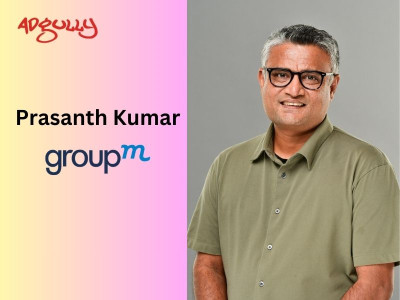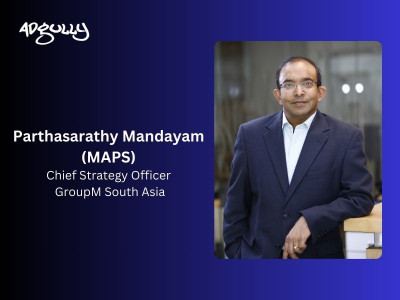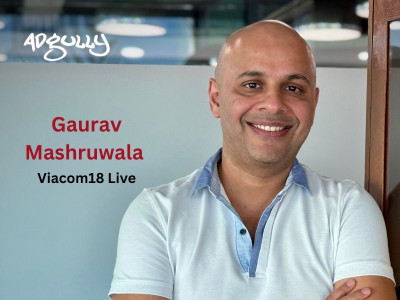5G along with Edge will transform live streaming in India: Mitesh Jain, Akamai India
Continuing to set new milestones in its journey, the Indian OTT industry is today the world’s fastest-growing OTT market. OTT platforms have democratised the entertainment industry, especially for actors struggling to get a break. With the day-by-day development in technology, OTT is occupying a place that has traditionally been occupied by primary television advertising, and it is becoming increasingly important for advertisers to consider the importance of this medium.
According to a recent survey, 66% of households subscribe to at least one streaming service, and the average household subscribes to three or more.
Along with this increase in the number of viewers, the chances of leaking the content (content piracy) has also increased. Given the recent surge in ransomware attacks and increasingly stringent compliance regulations, investing in technologies to reduce the spread of malware has become mission critical. Akamai Technologies, the world's most trusted solution to power and protect digital experiences, helps the brands digitally to protect and provide technology solutions that extends to over a decade of experience in streaming media content - across devices, networks and geographies while protecting and securing the content.
In an exclusive interaction with Adgully, Mitesh Jain, Country Sales Manager, Akamai India, speaks about the key trends in the live streaming segment, how 5G will impact live streaming applications, role of Akamai in media content and a lot more.
There was a tremendous spike in OTT content consumption during the lockdown period. Do you see this momentum continuing? What are the key trends you have seen in the live streaming segment?
The pandemic has changed people’s behaviour and lifestyles. One of the most significant changes is that people have started to consume media from the comfort of their home, making over-the-top (OTT) services an attractive option. In 2020, during the first phase of the lockdown, there was massive growth and good retention for OTTs. In the second wave, we’ve seen even greater acceptance of the OTT world.
With greater digital adoption, OTT viewership will continue to accelerate even after COVID-19 becomes endemic. At present, more than 400 million people use OTT video streaming services across Asia Pacific, and over 69% of video viewers in the region stream video at least once a week.
There is also an increase in viewers watching live events via OTT due to the COVID-19 restrictions. This includes events like the Tokyo Games, Euro Football tournament and VIVO IPL.
At the recently concluded Tokyo Olympic Games, the last full day of competition generated the highest video streaming traffic for 30-plus customers on the Akamai Intelligent Edge Platform. Medal matches for baseball, basketball, and soccer, along with several track and field finals, drove related traffic to 10 Tbps. That's more than double the 4.5 Tbps peak Akamai observed during the games in Rio in 2016. Average peak traffic for the full event in Tokyo was 8.3 Tbps compared with 3 Tbps for the full event in Rio. In total, Akamai streamed 500 million hours of video from Tokyo for our customers. That's more than double the 234 million hours of video delivered from Rio.
The challenge for content providers in this new normal is to ensure they have scalable technology to deliver broadcast-quality experience, with low latency and mitigate security issues.
What is the role of Akamai in enabling the live streaming of large events such as IPL, Euro and other media content?
Akamai is an important player in the digital ecosystem, enabling the world’s largest companies to deliver exceptional digital experiences to their customers. We are the leader in edge security and delivery technology solutions that extends to over a decade of experience in streaming media content - across devices, networks and geographies while protecting and securing the content.
Akamai helps in consistently delivering high quality streaming experiences to millions of live event viewers across the globe. Our live streaming management focuses on providing optimized quality streams to the end users and protecting the content owner from content theft and the unexpected surge in demand that a live event can witness. Through a combination of adaptive bit rate logic, redundancy, DVR, live origin services, token abuse restrictions, DRM and watermarking support, advanced reporting and real time monitoring, Akamai has delivered quality experience to several global live events at record setting scale, while ensuring the content owner is able to optimize costs and monetize content, without compromising on streaming quality.
How secure are live streaming platforms? What is the typical scale and type of attacks seen in India?
Attack traffic and malicious activities against video sites are becoming increasingly prevalent and pervasive. What enterprises need today are multi-layered defense architectures that can not only detect and deflect cyber attacks as close to the source as possible but also scale to absorb massive-scale threats.
By and large, most companies do not invest enough in security for their people, assets, and infrastructure. This is not to say that it’s possible to achieve 100% safety from such attacks, but rather that the most obvious vectors for infection can be mitigated and too many companies overlook such solutions.
An example is big sports tournaments where competition is not limited to the field of play. Behind the scenes, a high-stakes match is always brewing between broadcasters and video pirates. Akamai has worked with major streaming services worldwide on how rights-holders can implement anti-piracy and content protection strategies and tactics.
Attackers are thinking outside of the box when it comes to how to attack next, how to catch businesses off guard. It is vital to equip security teams of media organizations with smarter, more accurate and effective protections through automation and machine learning. In a nutshell – we need to be cyber resilient – prepare, respond and recover from cyber-attacks while continuing to operate effectively. The Internet has held up, but scale and capacity are still concerns, especially when you throw in large-scale attacks into the mix.
Broadcasters and content rights owners and OTT service providers in India are vulnerable. They're seeing multi point, multi vector attacks, across the spectrum. There are credential abuse attacks against a site and services, phishing attacks over email, piracy and pilfering of valuable content and properties or even account sharing to that extent.
Looking at the video game industry, do you observe a reduction in piracy in games that adopt a freemium model? Can these lessons be applied to the online video streaming industry?
Piracy is an issue which has evolved due to various factors like COVID-19, better Internet services, and the smartphone boom in India. Video piracy is a complex, nuanced subject with the potential to threaten the long-term viability of the industry as we know it. We are adapting to the changing landscape of piracy. There are several immediate requirements that are required to help the industry fight the battle. These include consistent piracy data points to help executives and the wider industry understand the threat; continued education of the general public about the wider impact of piracy on jobs, and the threat to national industries; cooperation across anti-piracy vendors and service providers to ensure technical solutions can be integrated efficiently; and, finally, leadership from rights owners across all genres to drive ubiquity across the industry when handling and distributing rights. The freemium model also plays its part in reducing piracy. With these initiatives in place, we can minimise the issue so that financial losses are reduced, job opportunities are protected, and licensing can continue to thrive in a global marketplace.
How will 5G impact live streaming in India?
5G is the fifth generation of mobile networks which is set to redefine the space of communication. It will ensure faster connection speeds than any other networks. 5G improves the performance with lower latency, higher throughput, and a lot more connected people and things. 5G will also enable lots of cool new apps that will increase internet usage more than ever before. This means there'll be a lot more traffic and users will expect an even better experience.
It will also amplify the need for an intelligent edge platform since all the new traffic will put even more strain on the core of the internet and will increase stress on cloud data centers where content is served. With the advent of live streaming platforms, the internet’s core will be subject to more congestion. Lack of capacity in the core makes it hard to service traffic at the edge, hence the edge is becoming more critical in a world of 5G. The edge is the part of the internet closest to end-users. Often called the “last mile”, the edge sits between cloud data centers in the core of the internet and billions of devices in homes and offices or moving around on mobile networks. Edge computing is like a doctor’s office with its own lab. Get your exam, lab tests, and results right there, on the spot. With edge computing, your data is collected, analyzed, and processed at the edge — right where people are interacting online. The edge can also add another layer of scale and performance and, with the right design, can provide security and help minimize costs. 5G along with Edge will transform live streaming in India.
80% of online piracy is attributed to illegal streaming. What is the cost to India’s M&E industry according to you?
The digital and OTT content industry in India is estimated to grow at 17% over FY21 to touch a revenue of Rs 33,800 crore by FY22, according to a recent KPMG report. With growth in OTT consumption, piracy is definitely on the rise. In India, this is primarily because of illegal file sharing applications and web portals. As per a few reports, advertising and subscription-led video streaming services are losing up to 30% of their annual revenue to piracy.

















Share
Facebook
YouTube
Tweet
Twitter
LinkedIn